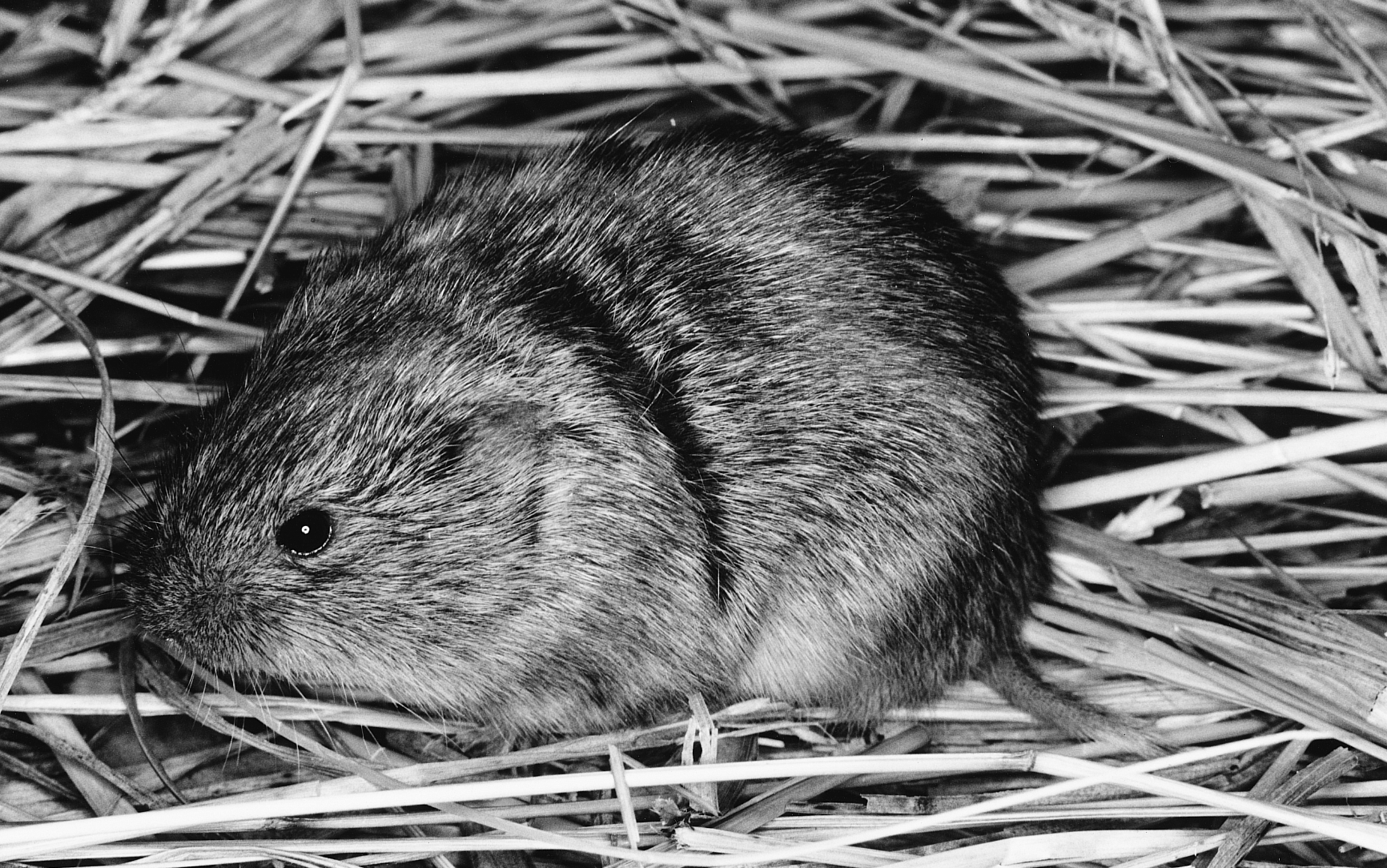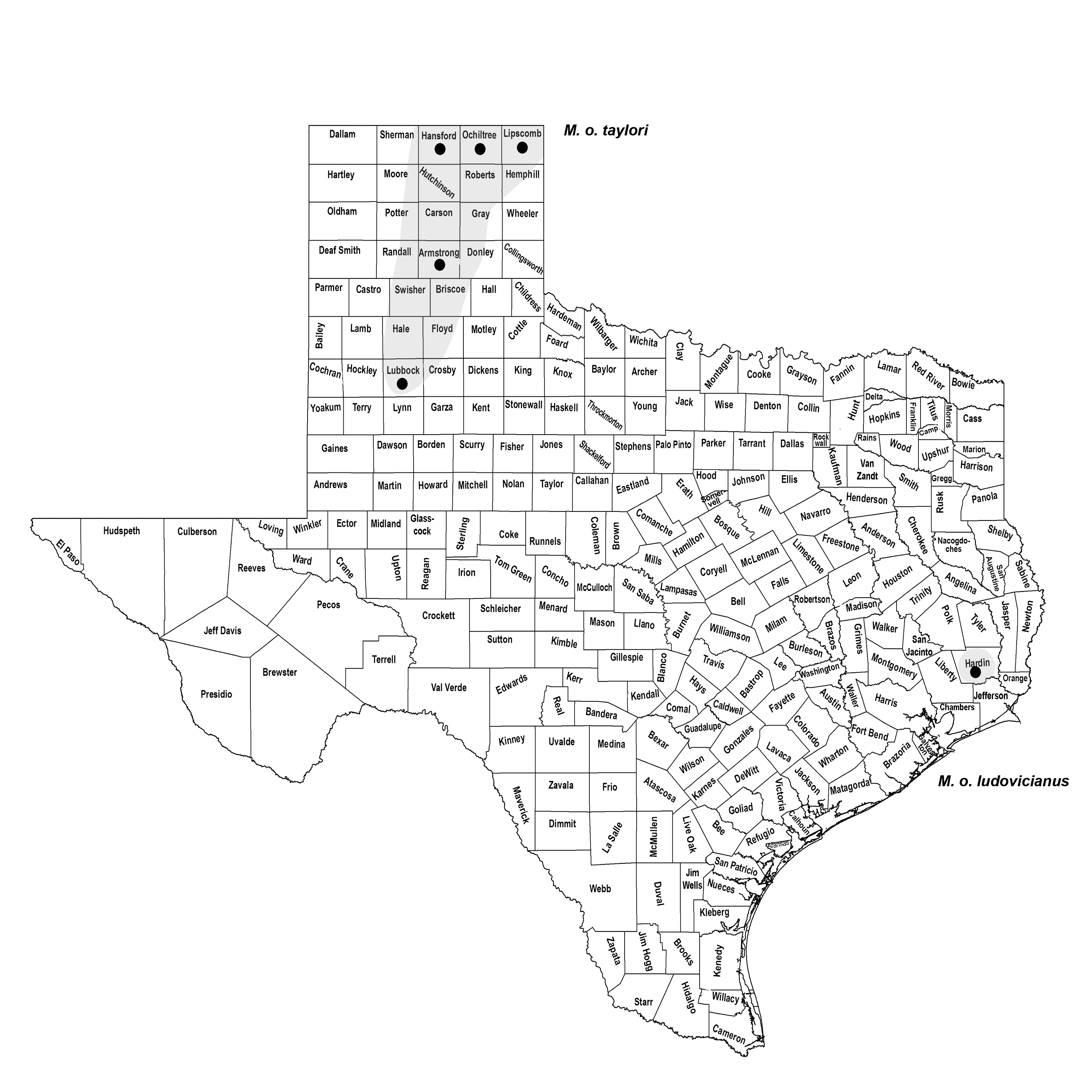PRAIRIE VOLE
Microtus ochrogaster (Wagner 1842)
Order Rodentia : Family Cricetidae
DESCRIPTION. A dark (brownish or blackish) vole with tail less than twice as long as hind foot, ears almost hidden in long, lax fur, and only five plantar tubercles; underparts tinged with buff. Dental formula: I 1/1, C 0/0, Pm 0/0, M 3/3 × 2 = 16. Averages for external measurements: total length, 146 mm; tail, 34 mm; hind foot, 20 mm. Weight, 30–50 g.

DISTRIBUTION. Known in Texas only from Hardin County in southeastern Texas and Armstrong, Hansford, Lipscomb, and Lubbock counties in the northern Panhandle.

SUBSPECIES. Microtus o. ludovicianus from Hardin County; M. o. taylori in the Panhandle region.
HABITS. Prairie voles for the most part inhabit tall-grass prairies. They live in colonies, utilizing underground burrows and surface runways under lodged vegetation for concealment and protection. Their burrows are shallow but complex in their ramifications and contain large storage chambers. In farming regions they frequently winter in shocks of corn and other small grains that offer both food and protection. Their nests are rather large structures, averaging about 20 × 10 × 10 cm in length, width, and height and may be placed either aboveground or in underground chambers about 12 cm below the surface. Small hillocks of earth and pieces of grass at the entrances of burrows often indicate the presence of underground nests.
Their food is almost entirely vegetable matter, including green parts of plants, seeds, bulbs, and bark, much of which they store for winter use. They may cannibalize their own kind that are caught in traps.
Their breeding habits are not well known. They probably breed throughout the year. Pregnant females have been captured in the winter months of November, January, and February. The main season, however, is in spring and summer. Apparently, each breeding female produces several litters a year, the size of which varies from two to six and averages about four. At birth, the young are blind, nearly naked, and helpless. They mature rather rapidly and are capable of reproducing in their first year.
POPULATION STATUS. Rare. The single specimen from Hardin County was taken in 1902 and represents the relictual subspecies M. o. ludovicianus (also occurred in western Louisiana), which is now extinct. The Panhandle specimens represent a different subspecies, M. o. taylori, and indicate that the prairie vole may be expanding its distribution in Texas.
CONSERVATION STATUS. The IUCN lists the prairie vole as a species of least concern, and it does not appear on the federal or state lists of concerned species. Although additional specimens recently have been obtained in the Panhandle, it could be argued that this vole should be protected. Given the paucity of information, further studies are needed before any such action should be taken. The status of these populations should be closely monitored in the future.
REMARKS. Recently a single individual was captured in Lubbock County. It is unknown whether it represents a range expansion southward from the Armstrong County population or a human translocation via transport of hay or livestock feed.
From The Mammals of Texas, Seventh Edition by David J. Schmidly and Robert D. Bradley, copyright © 1994, 2004, 2016. Courtesy of the University of Texas Press.
Natural Science Research Laboratory
-
Address
Museum of Texas Tech University, 3301 4th street, Lubbock, TX 79409 -
Phone
806.742.2486 -
Email
nsrl.museum@ttu.edu

